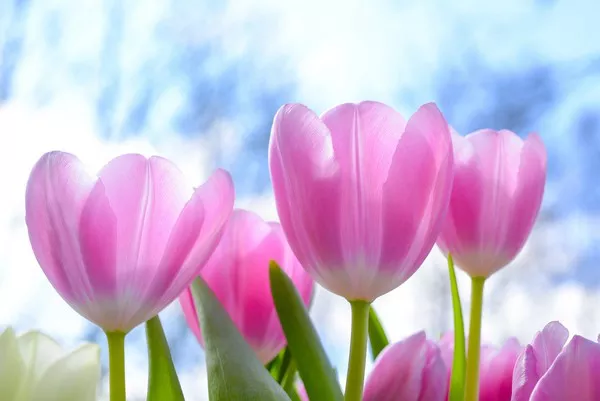Fireflies, with their mesmerizing bioluminescent displays, have captured the imagination of humans for centuries. These enchanting insects, also known as lightning bugs, are not only fascinating to observe but also play a crucial role in the ecosystem as pollinators and indicators of environmental health. While fireflies are predominantly attracted to each other through their light signals, they also exhibit preferences for certain flower species. In this article, we delve into the relationship between fireflies and flowers, exploring the factors that influence their attraction and shedding light on the significance of maintaining firefly-friendly habitats.
The Firefly-Flower Connection
Fireflies are drawn to flowers not only for their visual appeal but also for the resources they provide. One of the primary reasons fireflies visit flowers is to acquire nectar, a vital energy source that sustains their adult stage. Nectar is a sugary fluid secreted by flowers to attract pollinators, and fireflies are no exception to this mutualistic relationship.
Characteristics of Flowers that Attract Fireflies
While fireflies are generally opportunistic feeders, certain flower characteristics seem to be more appealing to them:
1. Light-colored Flowers: Fireflies are nocturnal insects, and they rely on their bioluminescence to communicate and attract mates during the night. Light-colored flowers, such as white, pale yellow, and light pink, reflect and amplify the glow of fireflies, making them more visible and enticing.
2. Strong Fragrances: Fireflies have a keen sense of smell, and strong floral scents serve as beacons to guide them towards a potential nectar source. Flowers with intense fragrances, especially during the evening hours, have a higher chance of attracting fireflies.
3. Shape and Structure: Fireflies, like many other pollinators, have specific preferences for flower shapes and structures. They are more likely to visit flowers with open, shallow blooms that provide easy access to nectar. Some flowers even have specialized landing platforms that make it convenient for fireflies to land and feed.
Flowers that Commonly Attract Fireflies
1. Phlox (Phlox paniculata): Phlox, also known as garden phlox, is a popular choice among gardeners and fireflies alike. Its clusters of fragrant, vibrant-hued flowers act as a magnet for these bioluminescent insects.
2. Black-eyed Susan (Rudbeckia hirta): The striking appearance of Black-eyed Susans, with their golden-yellow petals and dark centers, is especially attractive to fireflies seeking nourishment.
3. Evening Primrose (Oenothera biennis): True to its name, evening primrose releases a delightful fragrance in the evening, beckoning fireflies to its pale yellow blooms.
4. Purple Coneflower (Echinacea purpurea): This beautiful wildflower not only appeals to human admirers but also to fireflies, thanks to its abundant nectar and easily accessible central cone.
5. Liatris (Liatris spicata): Liatris, commonly known as blazing star or gayfeather, offers a vertical haven of tiny florets that beckon fireflies with its display of tiny, individual flowers.
The Importance of Fireflies in Pollination
Beyond their visual appeal and mystique, fireflies play a crucial role in the process of pollination. As fireflies move from flower to flower in search of nectar, they inadvertently transfer pollen grains, facilitating cross-pollination. Cross-pollination is essential for maintaining genetic diversity within plant populations, promoting healthier and more resilient ecosystems.
Creating Firefly-Friendly Habitats
Given the decline in firefly populations in recent years, it is becoming increasingly important to create habitats that are conducive to their survival. Here are some practical steps to encourage fireflies to thrive in your garden:
1. Plant Native Flowers: Native flowers have evolved alongside local firefly species, making them more compatible and attractive to these insects. Incorporate a diverse range of native flowering plants to support fireflies throughout their lifecycle.
2. Avoid Pesticides: Pesticides can be harmful not only to unwanted garden pests but also to beneficial insects like fireflies. Minimize the use of pesticides or opt for natural alternatives to ensure a safe environment for fireflies.
3. Provide Water Sources: Fireflies need water during their early stages of development. Consider installing a small pond or providing shallow dishes of water to create a welcoming habitat for firefly larvae.
4. Limit Artificial Lighting: Excessive artificial lighting can disrupt firefly communication and mating rituals. Use minimal outdoor lighting or opt for “firefly-friendly” lighting that emits longer wavelengths of light less likely to interfere with their behaviors.
Conclusion
Fireflies hold a special place in our hearts and imaginations, and understanding their interactions with flowers enhances our appreciation for these remarkable insects. By planting firefly-friendly flowers and creating suitable habitats, we can contribute to their conservation and continue to enjoy their magical presence in our surroundings. Let us take conscious steps to safeguard these enchanting creatures and preserve the allure of fireflies for generations to come.


